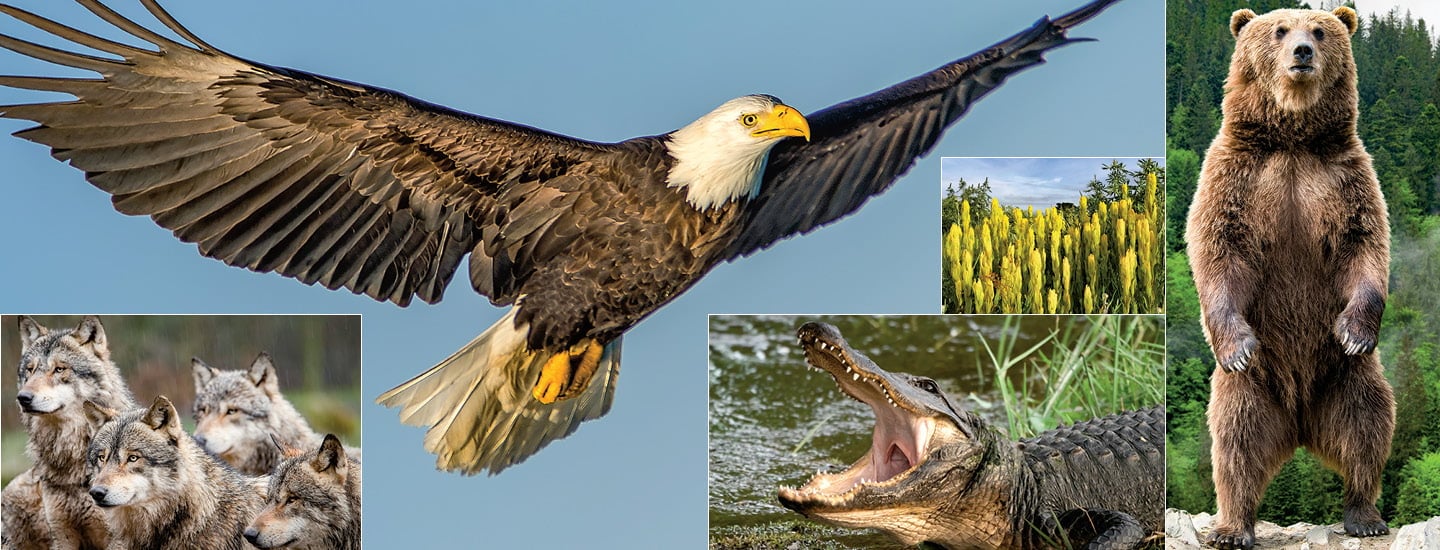The bald eagle was in trouble. When America adopted the bird as its national symbol way back in 1782, experts say, there may have been as many 100,000 nesting eagles in the country. But by the 1960s, only about 417 breeding pairs remained in the contiguous United States, after decades of hunting and the widespread use of pesticides had wiped out much of the population.
Then in 1973, Congress passed the Endangered Species Act (E.S.A.), which became the nation’s most comprehensive legislation for protecting animal and plant species at risk of extinction. The E.S.A. is unique because its goal is to prevent extinctions no matter the cost, says Robert Fischman, an environmental law professor at Indiana University. Other conservation laws might require that anyone altering the habitat of endangered species try to limit damage, he explains, but the E.S.A. won’t allow any endangerment of protected species.
The bald eagle was in trouble. When America adopted the bird as its national symbol way back in 1782, experts say, there may have been as many as 100,000 nesting eagles in the country. But by the 1960s, only about 417 breeding pairs remained in the contiguous United States. Decades of hunting and the widespread use of pesticides had wiped out much of the population.
Then in 1973, Congress passed the Endangered Species Act (E.S.A.). It became the nation’s most comprehensive legislation for protecting animal and plant species at risk of extinction. The E.S.A. is unique because its goal is to prevent extinctions no matter the cost, says Robert Fischman, an environmental law professor at Indiana University. Other conservation laws might require that anyone altering the habitat of endangered species try to limit damage, he explains. But the E.S.A. won’t allow any endangerment of protected species.

